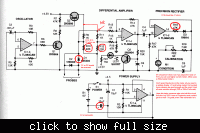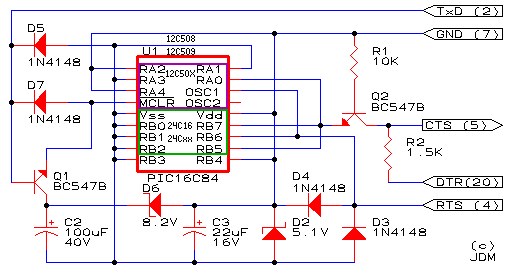brosskgm
Member level 4

- Joined
- Dec 9, 2010
- Messages
- 76
- Helped
- 2
- Reputation
- 4
- Reaction score
- 2
- Trophy points
- 1,288
- Location
- California, USA
- Activity points
- 1,853
I'm a new student (53) taking electronics repair again to refresh from 20 years ago. Things have changed a lot since then. 6 of us had decided to build our own equipment. I have successfully built a Capacitance meter, Diode, Transistor tester, Blue Ring tester with my own project pcb not kit purchased.
But I have been having a tough time to build an ESR meter to work when finished. Either because of needed parts not available in US are very costly, or minimums making a $30 project cost $118 or not having a pic programmer and so on. With two failures and deciding not to investing any more kit's or DIY projects for the ESR meter, I have to ask what one of the following or other recommended in the same price range would be a good choice and will be able to advance with me as I pursue this new career.
I'm looking for someone that has either used one of the following or the one they recommend to answer. chuckey/Frank please don't respond. Your not helping the question.
I'm not at a level to design my own circuits, just learning to repair them. Can read schematics enough to be totally dangerous and find my way around the board. The Blue ESR is $30 more than the Canada one and they are both + shipping but seem to be the same. But since I'm not sure I'm hoping for help and guidence here.
I've seen this one on eBay
h**p://cgi.ebay.com/In-Circuit-Capacitor-ESR-Meter-Digital-ESR-Tester-/280605758923?pt=LH_DefaultDomain_2&hash=item41556815cb
Or the Blue ESR
h**p://www.anatekcorp.com/blueesr.htm
Thank you so much.
Bob
But I have been having a tough time to build an ESR meter to work when finished. Either because of needed parts not available in US are very costly, or minimums making a $30 project cost $118 or not having a pic programmer and so on. With two failures and deciding not to investing any more kit's or DIY projects for the ESR meter, I have to ask what one of the following or other recommended in the same price range would be a good choice and will be able to advance with me as I pursue this new career.
I'm looking for someone that has either used one of the following or the one they recommend to answer. chuckey/Frank please don't respond. Your not helping the question.
I'm not at a level to design my own circuits, just learning to repair them. Can read schematics enough to be totally dangerous and find my way around the board. The Blue ESR is $30 more than the Canada one and they are both + shipping but seem to be the same. But since I'm not sure I'm hoping for help and guidence here.
I've seen this one on eBay
h**p://cgi.ebay.com/In-Circuit-Capacitor-ESR-Meter-Digital-ESR-Tester-/280605758923?pt=LH_DefaultDomain_2&hash=item41556815cb
Or the Blue ESR
h**p://www.anatekcorp.com/blueesr.htm
Thank you so much.
Bob
Last edited:



